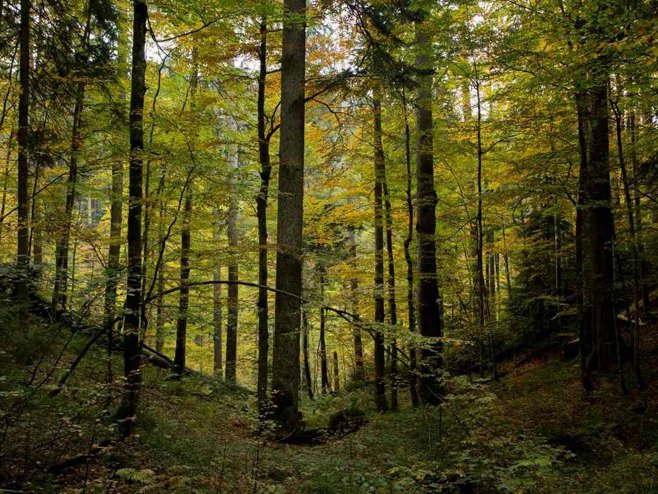The UNESCO World Heritage Committee declared today the Janj primeval forest near Šipovo a natural World Heritage Site.
The Janj primeval forest is among the 15 newly protected areas in six countries signatories to the UNESCO Convention on the Protection of Natural and Cultural Heritage, announced the Ministry of Civil Affairs of the Council of Ministers.
The natural world heritage of the Ancient and Primeval Beech Forests of the Carpathians and Other Regions of Europe has been expanded today to include sites in the Czech Republic, France, North Macedonia, Poland, Switzerland, and BiH.
The Janj primeval forest is the first BiH natural site to be included in the UNESCO World Heritage List, according to the Ministry of Civil Affairs.
The statement adds that the Janj primeval forest is a strict nature reserve covering an area of 295 hectares, where forest use and human activity are prohibited on 58 hectares.
The primeval forest consists of beech, fir, maple, elm, ash and spruce trees.
The UNESCO Ancient and Primeval Beech Forests of the Carpathians and Other Regions of Europe world heritage is currently the largest serial world heritage site encompassing 94 component parts in 18 countries.
It covers areas in Albania, Austria, Belgium, BiH, Bulgaria, France, Germany, Italy, Croatia, the Czech Republic, North Macedonia, Poland, Romania, Slovakia, Slovenia, Spain, Switzerland, and Ukraine.
– This requires collaboration across boundaries and illustrates the close relationship of the beech forest with European culture – reads the statement.
The statement reminds that it all began in 2007 with the Primeval Beech Forests of the Carpathians, ten areas in Slovakia and Ukraine, a transboundary world heritage from the very beginning.
With the inscription of the Ancient Beech Forests of Germany in 2011 on the World Heritage List, it was extended by five component parts; 63 areas in ten countries were added in 2017; and today’s decision added further 15 sites in six countries.
Beech forests with a high proportion of old growth and standing and lying dead wood provide an ideal habitat for many species of flora and fauna. It is estimated that there are up to 10,000 species of animals in beech forests.
– It is therefore world heritage with a future and a top masterpiece without borders – reads the statement.
The Old Bridge area of the Old City of Mostar, the Mehmed Paša Sokolović Bridge in Višegrad, and Stećci – medieval tombstone graveyards were inscribed earlier on the prestigious UNESCO World Heritage List.
Source: RTRS
Photo: Stevan Knežić and Rosa Rakita/prasumajanj.com





